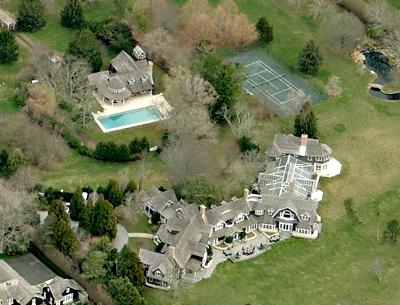The Gates Are Closed To a Child

In London and New York this week, the tabloids were agog with news of “the Hamptons,” which is not at all unusual for July, when everyone who’s usually there is here instead, except that the man at the hub of the hubbub has been dead for almost five years.
That would be the financier Bruce Wasserstein, whose death at 61 left five of his six children — three by his second wife, two by his third — in possession of a 27.6-acre compound off Further Lane in Amagansett. It seems safe to say that Mr. Wasserstein, whose erstwhile partner Joseph Perella once described him as a “secretive” man whose intimates knew almost nothing of his personal life, would have been horrified by the current headlines.
According to The Daily Mail and The Daily News, the mother of Mr. Wasserstein’s sixth child, whose affair with the mogul ended soon after the birth of a girl who was named Sky Wasserstein, has sued the older children for access to the estate, known as Cranberry Dune. Erin McCarthy, a 41-year-old business school graduate, claims in her lawsuit, filed in April 2012 in Manhattan Surrogate Court, that a child psychologist told her Sky, now 5, should be “exposed to concrete representations of the lost parent” and that she would find visits to the compound “therapeutic.”
The five older siblings, two of whom have law degrees, have allegedly refused to allow Ms. McCarthy and their half-sister on the property, not because of the child — whom they reportedly offered a choice of their father’s sprawling ranch in Santa Barbara, Calif., or his regal apartment in Paris if she would surrender rights to Cranberry Dune — but because of her mother. They blame Ms. McCarthy, according to published reports, for the breakup of Mr. Wasserstein’s 12-year marriage to his third wife, the former Claude Becker.
In late 2008, after Mr. Wasserstein ended the affair and began a new relationship, Ms. McCarthy is reported to have broken into the estate, carrying the infant Sky and screaming obscenities, and to have “terrorized” Claude Becker Wasserstein’s two boys, then 9 and 8, who were in the main house along with their father’s soon-to-be fourth wife. Ms. McCarthy has acknowledged that incident, saying in court documents that she was suffering from postpartum depression at the time.
Mr. Wasserstein, who at his death was the president and chief executive officer of Lazard Ltd. and the owner of New York magazine, left an estate estimated by Forbes magazine at $2.3 billion. Sky Wasserstein, who reportedly was left $75 million, lives with her mother, who received substantial child support, in a Manhattan apartment paid for by the estate.
If their father’s example is any indicator, the court dispute between Ms. McCarthy and his adult children seems unlikely to be concluded any time soon. In October 1991 Mr. Wasserstein began what was to be a tenacious five-year legal battle with East Hampton Town over his plan to subdivide Cranberry Dune into five residential lots, one of which would contain an existing seven-bedroom family home. The proposal ran up against the town’s open space regulations, under which half the land and 70 percent of its prime soils was to be put into an agricultural preserve. The planning board, which also wanted the four proposed new houses clustered on smaller lots, turned down the subdivision, reasoning in part that the point of preserving farmland was to have it farmed, and that it would be too difficult for a farmer to have to negotiate with so many landowners.
Two years later, as the case was snailing its way through the justice system, the billionaire dropped his suit and submitted a new subdivision map, including a conservation easement covering 10 acres that are part of the Atlantic Double Dune system. That proposal went back and forth before it was finally approved, in November 1994, on one condition: that Mr. Wasserstein create a reserved area and deed it to a third party, perhaps the Peconic Land Trust or Nature Conservancy, to ensure its preservation as open space. He refused, calling the demand a “taking,” and sued again, this time challenging the constitutionality of the open-space law.
Finally, in early 1996, he modified his second plan, asking this time for four lots rather than five, which changed its classification from a major subdivision to a minor one, obviating the open-space requirement. That proposal was okayed, to the relief of officials and environmentalists who had feared that the courts might overturn East Hampton Town’s open-space law.
Two years later, in the summer of 1998, the zoning board of appeals granted Mr. Wasserstein a variance allowing him to build a tennis court closer to a side yard than required by the town code.
The Star reported that the property in question would be owned by one of his (then) three children, taking note that it was in an agricultural district.
